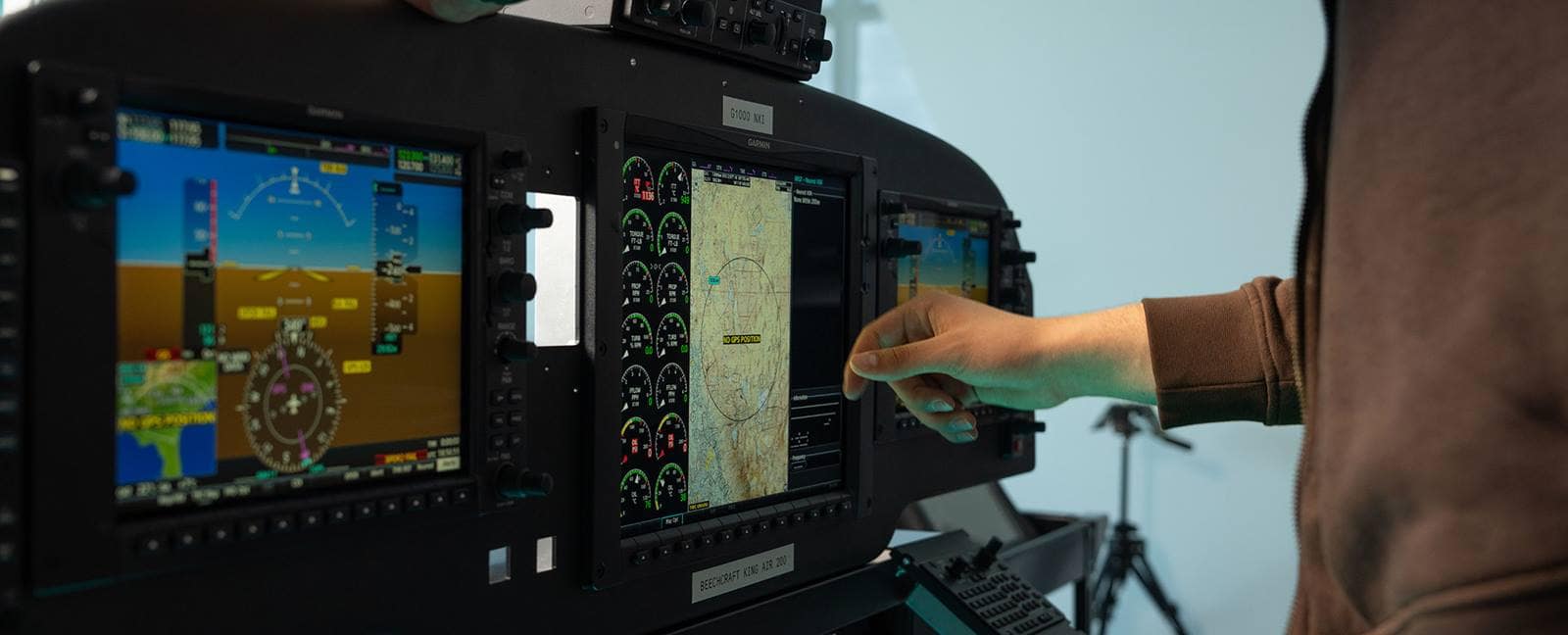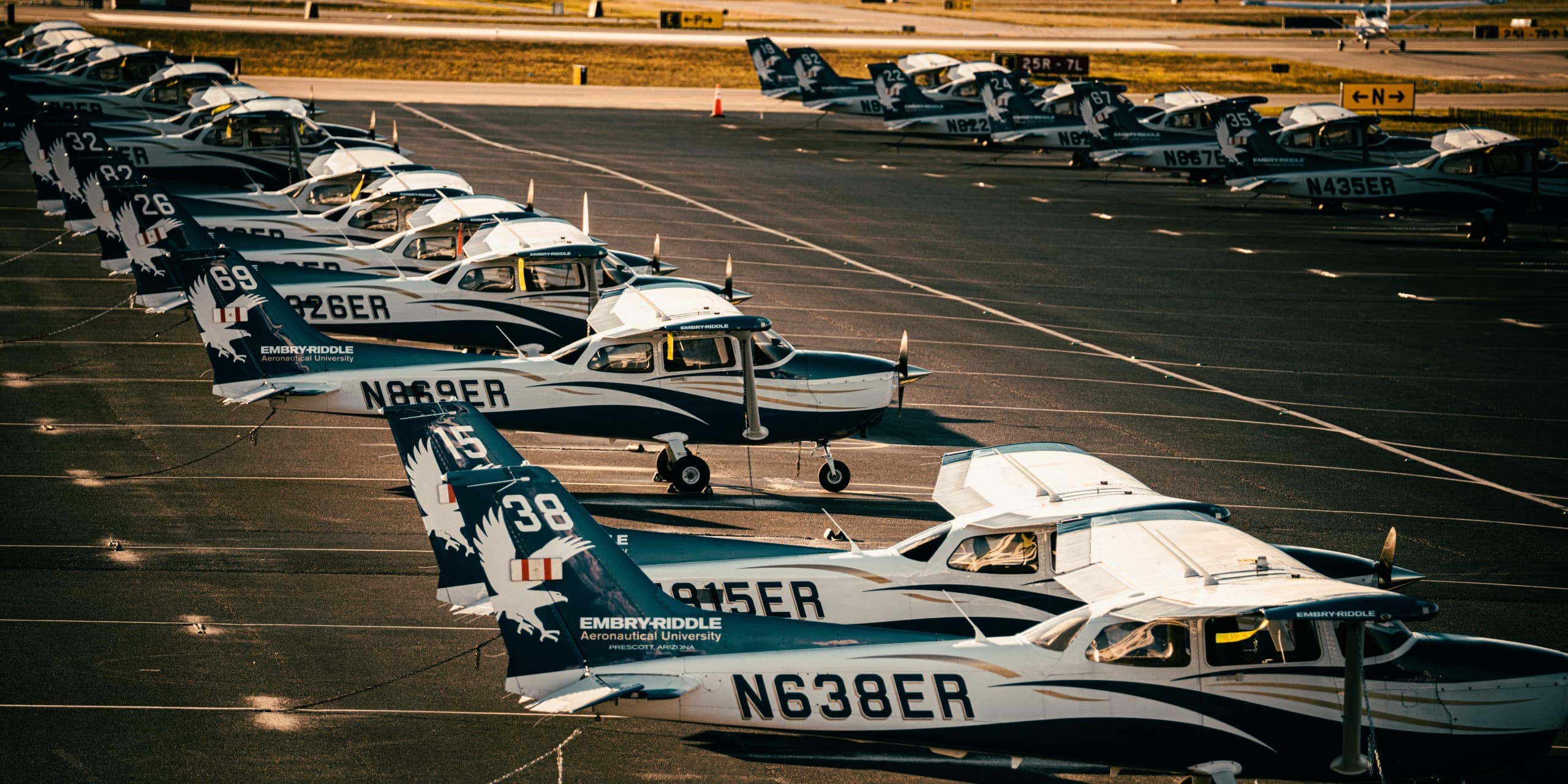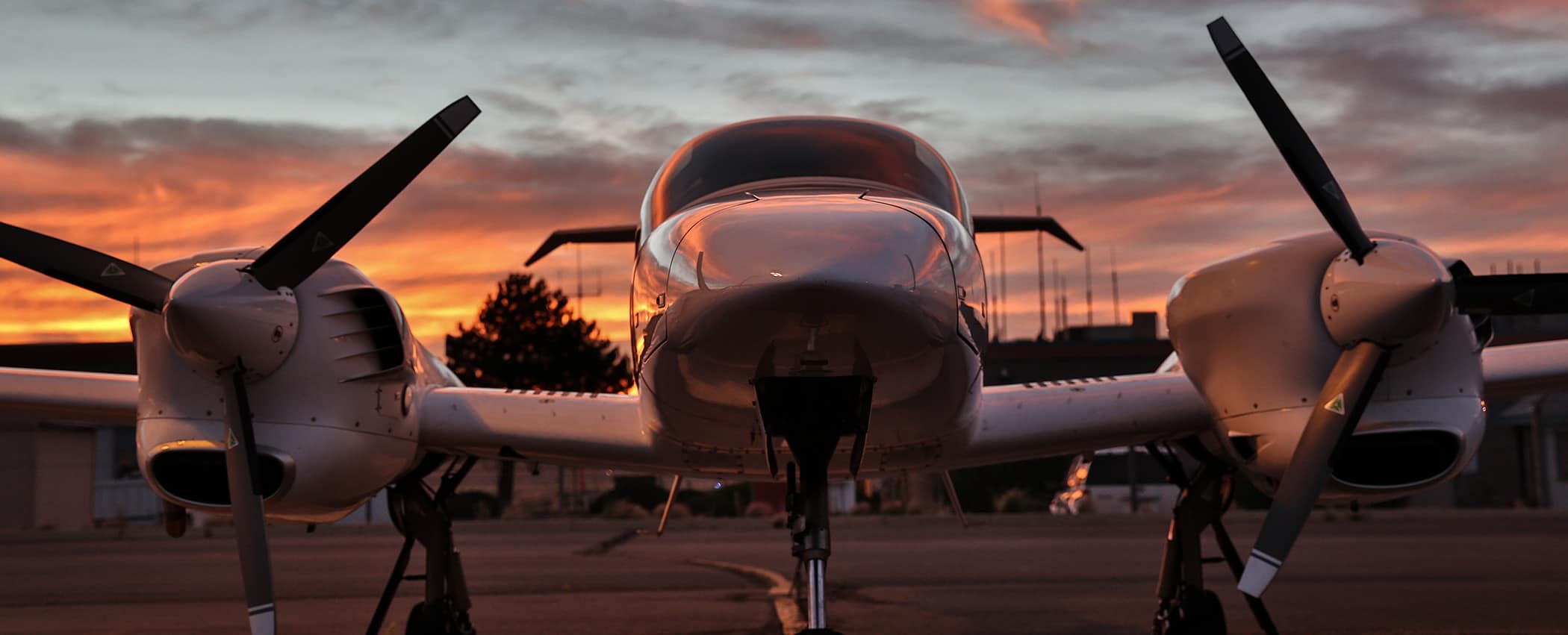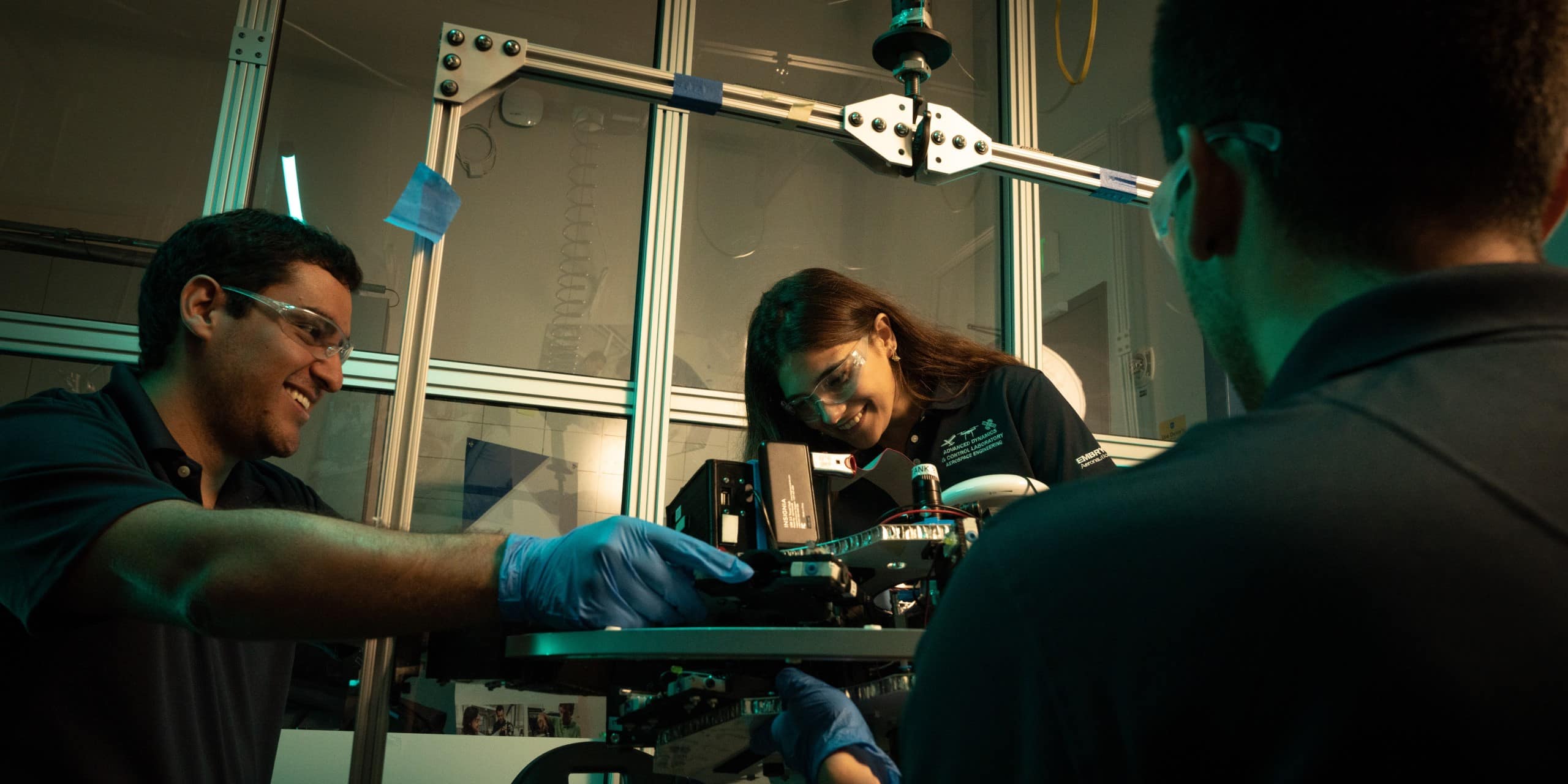
Master of Science in
Airworthiness Engineering
The M.S. in Airworthiness Engineering prepares students for careers in testing and certifying aircraft systems, parts and products to ensure compliant operations.
About the Master of Science in Airworthiness Engineering
The M.S. in Airworthiness Engineering (MSAWE) provides the foundational elements of Aircraft Certification and airworthiness principles as they apply to aerospace vehicle certification and sustainability. The curriculum offers a meaningful exploration of relevant civil and military airworthiness requirements in vehicle development and operation, thereby providing an understanding of the implications and impact on crewed, uncrewed and other innovative vehicle systems, and their state of operation over a useful life.
Embry-Riddle's expert faculty have extensive industry experience, coordinate with an Industrial Program Advisory Board and provide students with first-hand knowledge, enthusiasm and guidance. This distinctive curriculum paves the way to a career in airworthiness engineering, opening the door to becoming an FAA-approved Designated Airworthiness Representative (DAR) or a Designated Engineering Representative (DER). The M.S. in Airworthiness Engineering is the very first program approved by the FAA as credit toward an FAA DER Certification.
Student Learning Outcomes
You will have the opportunity to learn the following while studying for an AWE career:
- Understand how civil and military regulatory frameworks apply to contemporary issues in air system certification.
- Perform engineering analysis using acceptable methods for substantiating airworthiness compliance.
- Investigative methods to drive innovative airworthiness compliance solutions over an entire life cycle.
- Master airworthiness engineering principles and processes reinforced with elective courses within selected technical discipline areas in air system certification.
Airworthiness Engineering Career Opportunities
Careers and Employers
Embry-Riddle graduates are set to enter the workforce in top companies, including Northrop Grumman, Lockheed Martin, the U.S. Department of Defense and The Boeing Company.
Graduates of the airworthiness engineer program often secure roles as:
- Airworthiness Engineers
- Aircraft Certification Engineers
- Avionics Engineers
- Flight Analysts
- Power Plant Engineers
- Flight Test Pilots
Airworthiness Engineering Salary Information
Pursuing a Master of Science in Airworthiness Engineering from Embry-Riddle Aeronautical University provides graduates with competitive salaries averaging $71,162 annually, as of 2023.
DETAILS
About Airworthiness Engineering at the Worldwide & Online Campus
Embry-Riddle's groundbreaking Airworthiness Engineering master's program stands as the first and only degree in its domain, offering students an opportunity to elevate their scientific acumen in airworthiness, systems safety and uncrewed systems design. The curriculum empowers students to cultivate the essential skills required to navigate challenges and spearhead advancements in the field.
The MSAWE curriculum addresses the aspects of the regulatory, technical and physical precepts applicable to airworthiness engineering for professionals involved in air systems development. With this flexible online platform, students can interact with professors and other students on their schedule, from anywhere in the world.
Airworthiness Engineering Information
- Credits: 30
- Online or In-Person: Fully Online
- This program takes approximately two years to complete. The program has 10 courses required for graduation. We recommend taking one course per term for five terms per year.
Helpful Links
- Attend a Worldwide Virtual Info Session
- Discover the Department's Faculty
- Explore the Fields of Study: Aviation & Engineering
- Find Related Clubs & Organizations
Student Learning Outcomes
Students will:
- Exhibit an understanding of how civil and military regulatory frameworks, National and International, apply to contemporary issues in air system certification.
- Perform engineering analysis using acceptable methods for substantiating airworthiness compliance to requirements.
- Effectively communicate information, both technical and procedural, in written and oral forms to audiences in the aviation and aerospace disciplines.
- Make use of investigative methods to derive innovative airworthiness compliance solutions over the life cycle.
- Demonstrate topic mastery of airworthiness engineering principles and processes for selected technical discipline areas in air system certification.
- Recognize the importance of honest and ethical behavior concerning airworthiness in all their work, their spoken statements, and their written artifacts.
DEGREE REQUIREMENTS
Core/Major
| AWEN 502 | Airworthiness Process and Procedures | 3 |
| SYSE 505 | System Safety and Certification | 3 |
| UASE 501 | Introduction to Uncrewed Aircraft Systems Design | 3 |
| AWEN 510 | Aircraft Airworthiness Engineering Principles | 3 |
| MATH 546 | Application-Based Advanced Engineering Mathematics | 3 |
| AWEN 552 | Continued Airworthiness | 3 |
| AWEN 690 | Graduate Research Project | 3 |
| or PMGT 652 | Concepts and Practices of Project Management | |
| Total Credits | 21 | |
Electives
| Electives: (9 credit hours) Choose one of the following concentrations. | 9 | |
| Structures | ||
AENG 502 | Strength and Fatigue of Materials | |
AENG 510 | Aircraft Structural Dynamics | |
AENG 514 | Introduction to the Finite Element Method | |
| Engineering Management | ||
EMGT 500 | Managing in the STEM Environment | |
EMGT 530 | Project Scheduling and Risk Management | |
EMGT 620 | Technology and Innovation Management | |
| Systems Engineering | ||
SYSE 530 | System Requirements Analysis and Modeling | |
SYSE 560 | Introduction to Systems Engineering Management | |
SYSE 625 | System Quality Assurance | |
| Total Degree Requirements | 30 | |
Plan of Study (MSAWE)
Year One
| Term 1 | Credits | |
|---|---|---|
| AWEN 502 | Airworthiness Process and Procedures | 3 |
| Credits Subtotal | 3.0 | |
| Term 2 | ||
| SYSE 505 | System Safety and Certification | 3 |
| Credits Subtotal | 3.0 | |
| Term 3 | ||
| UASE 501 | Introduction to Uncrewed Aircraft Systems Design | 3 |
| Credits Subtotal | 3.0 | |
| Term 4 | ||
| AWEN 510 | Aircraft Airworthiness Engineering Principles | 3 |
| Credits Subtotal | 3.0 | |
| Term 5 | ||
| MATH 546 | Application-Based Advanced Engineering Mathematics | 3 |
| Credits Subtotal | 3.0 | |
| Credits Total: | 15.0 | |
Year Two
| Term 1 | Credits | |
|---|---|---|
| AWEN 552 | Continued Airworthiness | 3 |
| Credits Subtotal | 3.0 | |
| Term 2 | ||
| Elective #1: Structures, Systems or Engineering Management | 3 | |
| Credits Subtotal | 3.0 | |
| Term 3 | ||
| Elective #2: Structures, Systems or Engineering Management | 3 | |
| Credits Subtotal | 3.0 | |
| Term 4 | ||
| Elective #3: Structures, Systems or Engineering Management | 3 | |
| Credits Subtotal | 3.0 | |
| Term 5 | ||
| AWEN 690 | Graduate Research Project | 3 |
or PMGT 652
|
Concepts and Practices of Project Management | |
| Credits Subtotal | 3.0 | |
| Credits Total: | 15.0 | |
| Total Degree Requirements | 30 | |
Get Started Now:
Summary
30 Credits
Estimate your tuition by using the Tuition Calculator
View Financial Aid Information
Learn more about the benefits of an Online Degree
Learn about our General Education
Find out about transferring credits to this degree
Learn more about our Veterans & Military benefits
View our Academic Calendar
Search Courses for this degree




